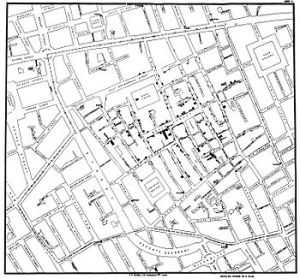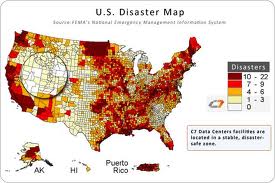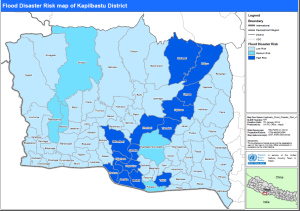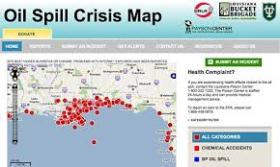Foreign employment and its impacts on the economy of Nepal
By: Roshan Karki
Introduction
Migration of people from one place to another is a usual phenomenon since the beginning of human civilization. The migration in the beginning was for the sake of food and exploring new places for security purpose. But gradually the migration took the shape in diverse form and now has become a very essential and common in each and every corner of the world. Today, most of the people migrate in search of better employment opportunity. Especially in the developing countries like Nepal, most people migrate to foreign land in search of employment so that they can well feed and support their families. Nepal has a long history of migration of people for employment. For around 200 years, Nepali men (and to a lesser extent women) have been leaving their homes to seek employment and living abroad. Even before the well-known recruitment to British-Indian armies, poor Nepalese fled excessive taxation, corves labor and exploitation from state agencies. In this context, on the backdrop of the current political transition of Nepal and the instability that comes with it (especially in the economic sector), Nepal’s economy has largely rested on its population opting for foreign employment. With subsistence agriculture as a major economic activity, staggering number of unemployed, low investments in the industrial sector owing to power cuts as high as sixteen hours a day and disturbed political and business environment, the number of people leaving for foreign employment has been ever rising each and every day. The reasons behind the migration are almost same in Nepal as other parts of the world. Existing poverty, limited employment opportunities, deteriorating agricultural productivity, armed conflict are some of the reasons about the motives behind migration of people for foreign employment. There are many villages in Nepal where the labor migration has been established as a culture of community to go aboard for work for a while and return back with some money and experience of placement in different geographical location. The influence of friends, relatives and well wishers has also played a prominent role to the promotion of international labor migration. According to the Department of Foreign Employment, the number of Nepalese leaving the country for overseas jobs increased by 52.15 percent, to 45,165 from mid-July to mid-August compared to the figure of the same period of 2010. A total 29,685 Nepalese had gone abroad for jobs during that period of 2010.
Plans for Nepal’s development have tended to pay relatively little attention to foreign labor migration and flows of remittances back home; despite evidence of their substantial importance to rural households. Even the remittance that country receives each year is not used in productive work. Most of the amounts are being spent on household expenditure, health services, education for the children and constructing new houses, other essential reconstruction work and pay back lone taken by the migrant workers. It is seen that neither our government nor the migrants have appropriate vision to invest their earning in the productive work. Such negligence from government of Nepal in term of foreign employment are dropping country away from development as people are involving in the development of other countries rather than their own countries.
Impacts of the foreign employment and economy of Nepal
Foreign employment has huge influence in the economy of our country Nepal especially these days as development works have been disturbed due to the political instability and disturbed business environment.
Positive impacts
In the last 10-15 years, the Nepalese government has recognized the significance of labor migration and remittances to the national economy because these represent a huge source of foreign exchange and income in the form of tax. Only in the last couple of years has new research generated information and data to reveal the extent of Nepal’s dependency on foreign labor employment and remittances. It has held the poorest household as the remittances has prevented the loss of existing assets of the people. It has also helped in improving the supplies of food, education and access to medical treatment and helped in the improvement of living standards of normal people. Remittances have been used to purchase lands in the urban areas, to start small business and to provide quality education to the family members, which have uplifted the standard living of the people.Returnees are the trained and skilled manpower and able to contribute to the country.More aware and disciplined human resources are now available in the service of society.Re-ploughing of earnings of the migrant workers would help generate the employment opportunities for other unemployed people in the country.
Negative impacts
Foreign labor migration is not without its negative impacts, though. Migrants workers have faced problems both in the home country and the country of destination, where as the problems in abroad are highlighted very much as compared to the problem that they are being in the national level. Most of the Nepalese migrant workers going abroad through illegal channels have very low living standards and inhumane working environments. Due to the limitation of information sources, the rate of frauds and cheating among workers going through illegal channels is much higher compared to workers going through formal channels. Men are not only involved in foreign employment. There is huge participation from women also which led to the problem of women trafficking. Also, among women migrant workers physical and sexual abuses by employers is common and abandoned babies caused by unwanted pregnancies is among the major issues Nepalese embassies at gulf countries are having to deal with. The trafficking of women, the migration of child laborers across international borders (especially to India), national labor shortages and the flow of immigrants into Nepal (especially from India) are phenomena that also occur alongside foreign labor migration. Policies related to foreign labor migration must seek to address this range of issues.
Though there are both positive and negative impacts, major impacts are positive rising up the economy of the country. So some serious measures to lower the negative impacts and to maximize the positive impacts should be adopted.
Recommendations
In recent times, it seems that the government has recognized foreign employment opportunities as one way to alleviate poverty and unemployment in the country. So, government should implement different policies and programs for promotion, control and management of foreign employment. Though some policies have been implemented under Foreign Employment Act by Department of Foreign Employment, they are not carried out effectively and efficiently. So, they require more attention from the government of Nepal.
Government of Nepal should pay attention to areas listed below for promoting, controlling and managing the foreign employment.
v Foreign employment services and opportunities must be expanded, in order to create a favorable environment for sending the maximum number of Nepalese workers to the maximum number of countries for employment. For this purpose, training programs should provide skills to Nepalese workers according to the demands of foreign employers. The private sector will be taken into consideration as an active partner in the provision of such training programs.
v Special programs should be conducted to provide security for workers who are willing to go to a foreign country for employment.
v Training programs should be conducted in rural and urban areas with the participation of local bodies, to increment employment.
v Foreign employment institutions should be established with the participation of the private sector for the development of foreign employment opportunities.
v In countries where the greatest possibilities for foreign employment exist, diplomatic missions of Nepal should be mobilized and a labor attaché should be kept in order to protect the rights and security of Nepalese workers.
v Provisions should be made to protect women and minors from health hazards, abuse, immoral activities and exploitation and no child should be engaged in work in any enterprises.
v Effective and strong policies should be implemented for the employment agencies called ‘Manpower Company’ that are also responsible for sending people abroad for employment to prevent the illegal migration of people for foreign employment.
v Subagents or brokers should be completely avoided and transparent selection programs should be developed.
v Besides these major provisions, government should also conduct consultation meetings with the experts, occupational groups, trade unions and foreign employment enterprises to make rules and regulations for the promotion and management of foreign employment occupation.
Conclusions
Finally the study has concluded that the foreign labor migration can be regulated with the proper implementation of government policies and programs. The foreign employment profession should also be accepted as a dignified occupation as because of its importance to strengthen the national economy and it also making our young people engage in some sorts of income generating activities even in the difficult period of the country.
References
v Ojha, Purushottam(2010).Foreign Employment and Its Impact on Nepalese Economy[PowerPoint Slides].
v Jones, H., and Basnett, Y. (June, 2013).Foreign Employment and Inclusive Growth in Nepal.
v Seddon, D., Gurung, G., and Adhikari, J. (January 1, 1998). Foreign Labor Migration and the Remittance Economy of Nepal. Himalaya, the Journal of the Association for Nepal and Himalayan studies: Vol. 18: No. 2, Article 7.
v Bhattarai, P. (October, 2005). Migration of Nepalese Youth for Foreign Employment: Problems and Prospects: A Review of Existing Government Policies and Programs.
v Gurung, G. (2004). An Overview Paper on Overseas Employment in Nepal.
v Samriddhi, the Prosperity Foundation. (September, 2011). Foreign Employment for Economic Growth.





